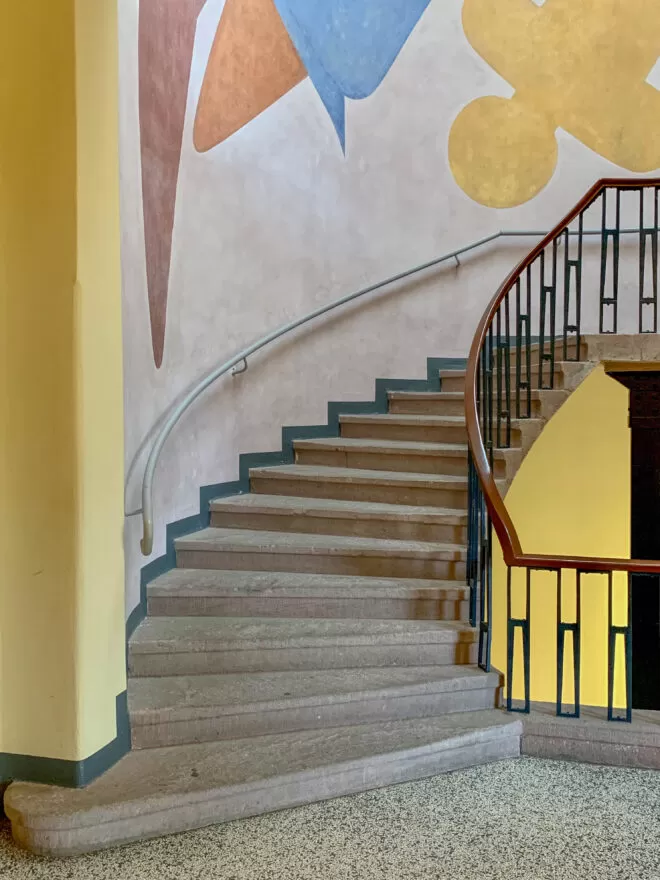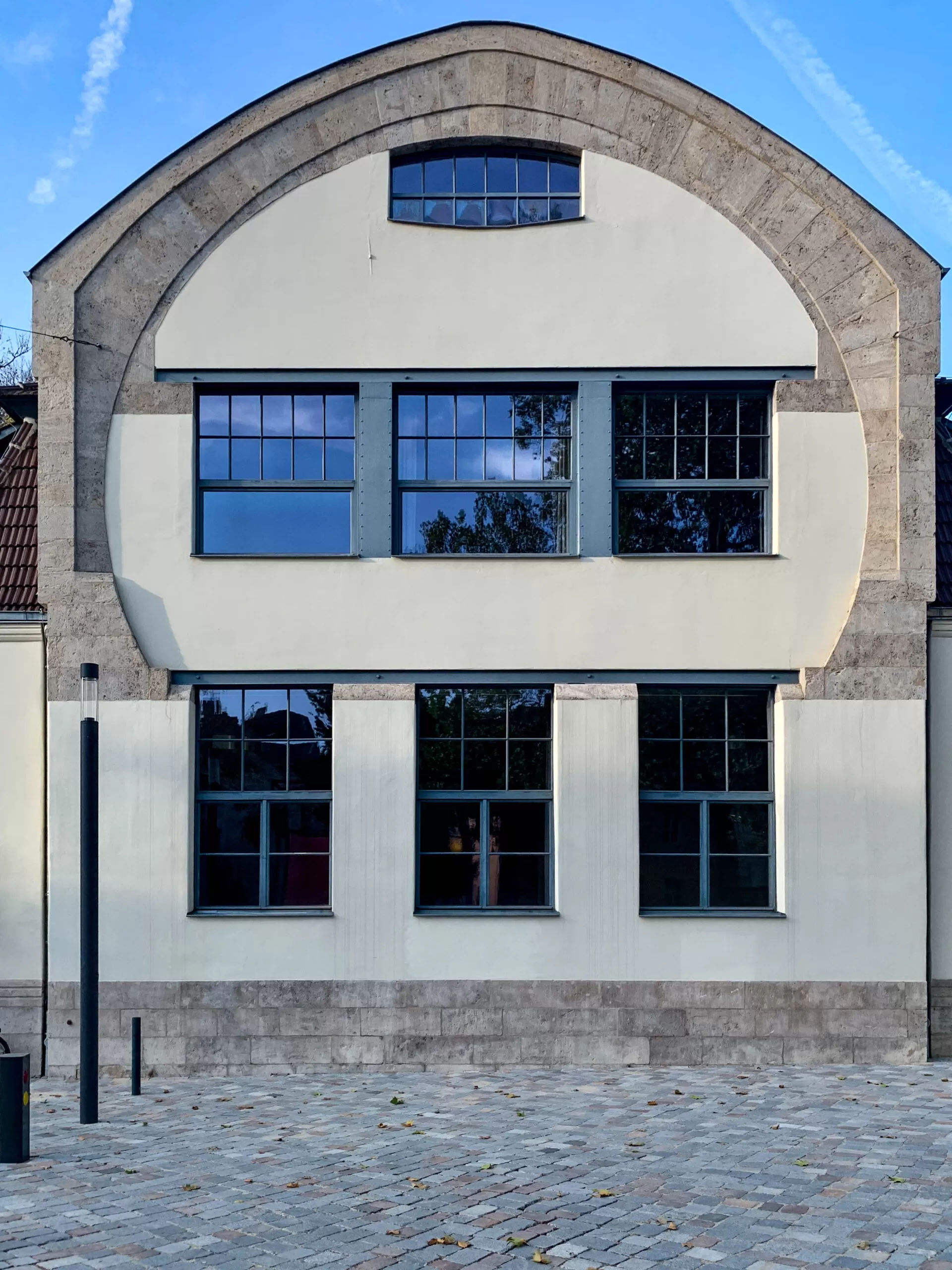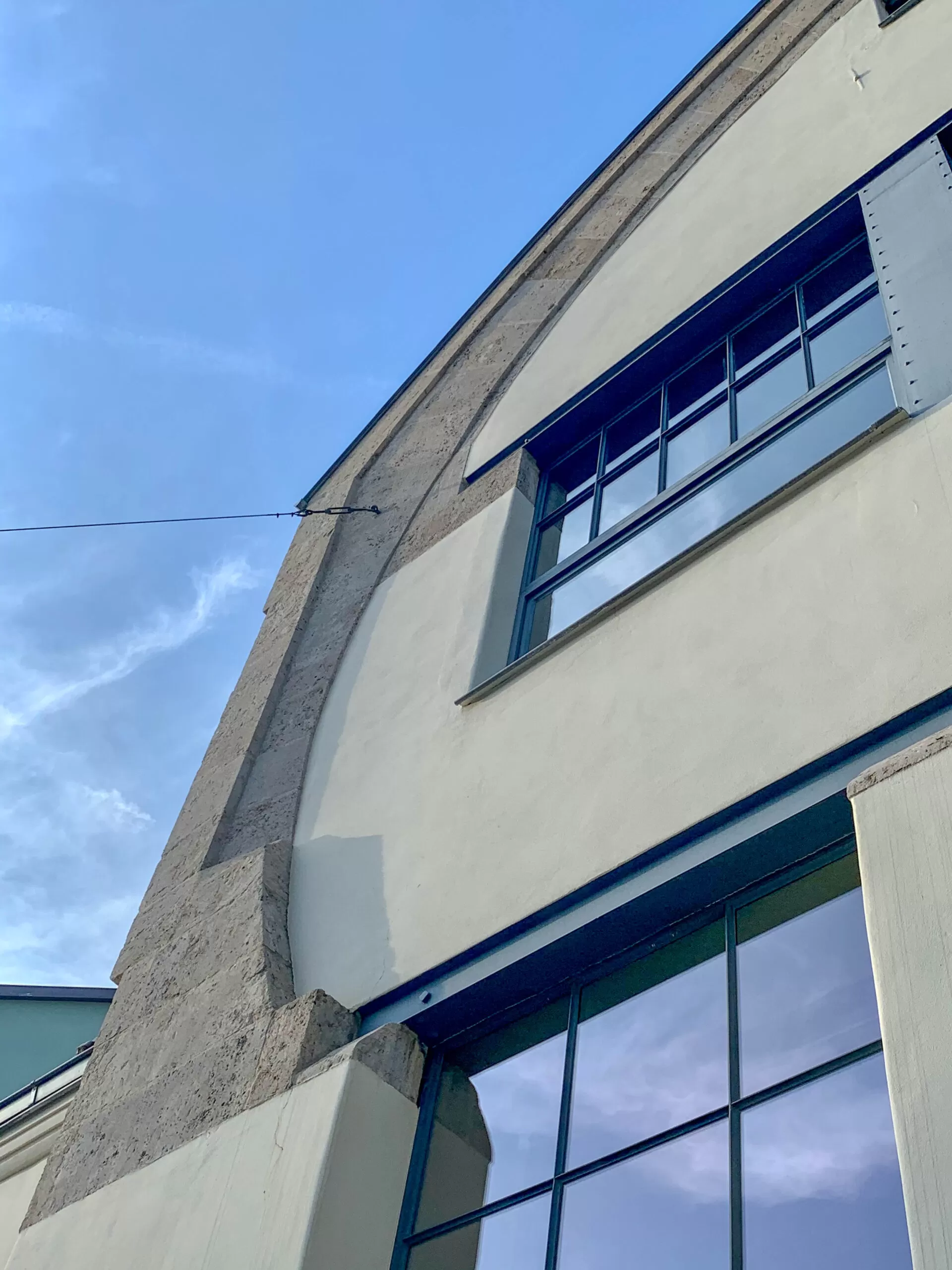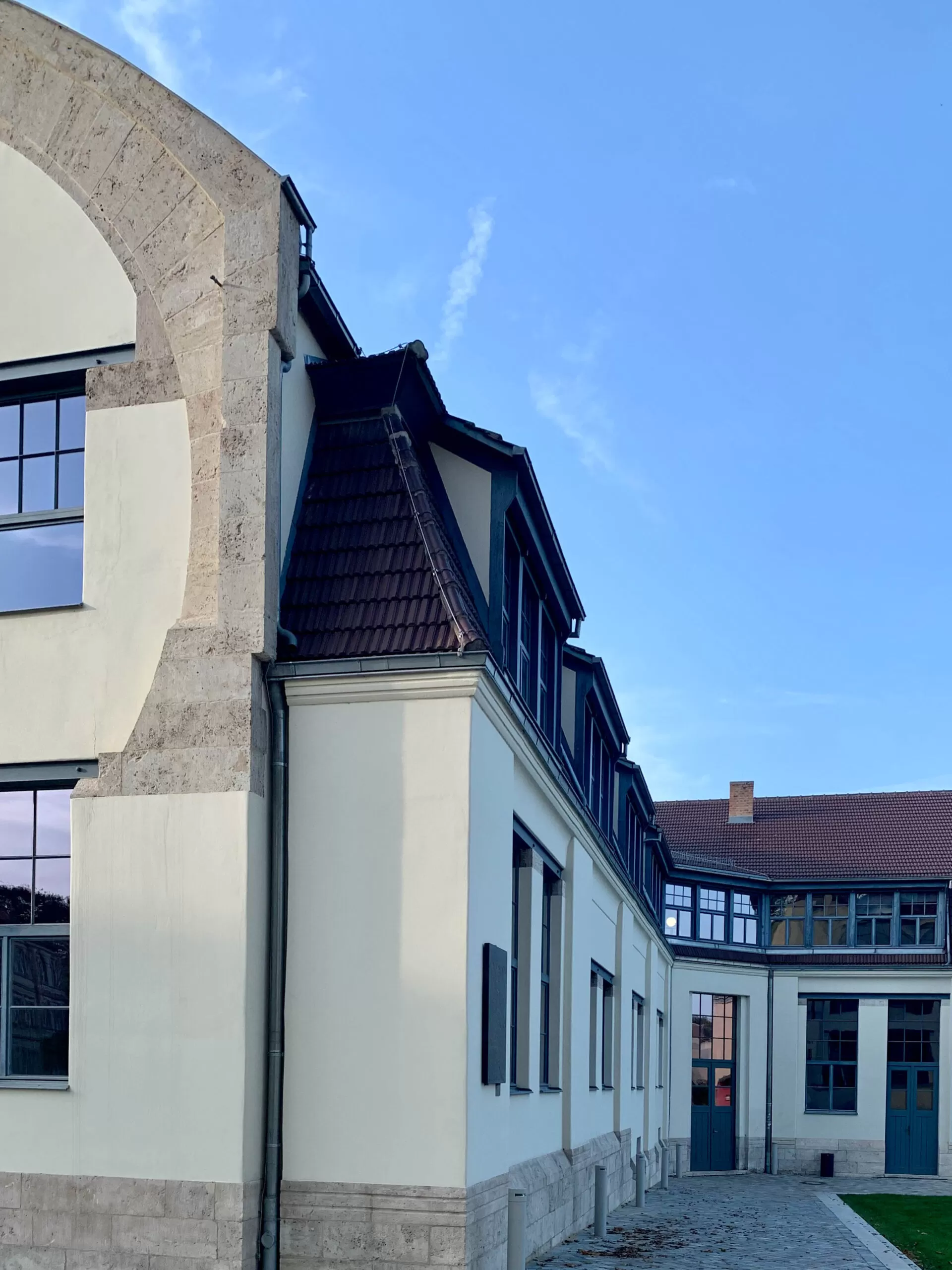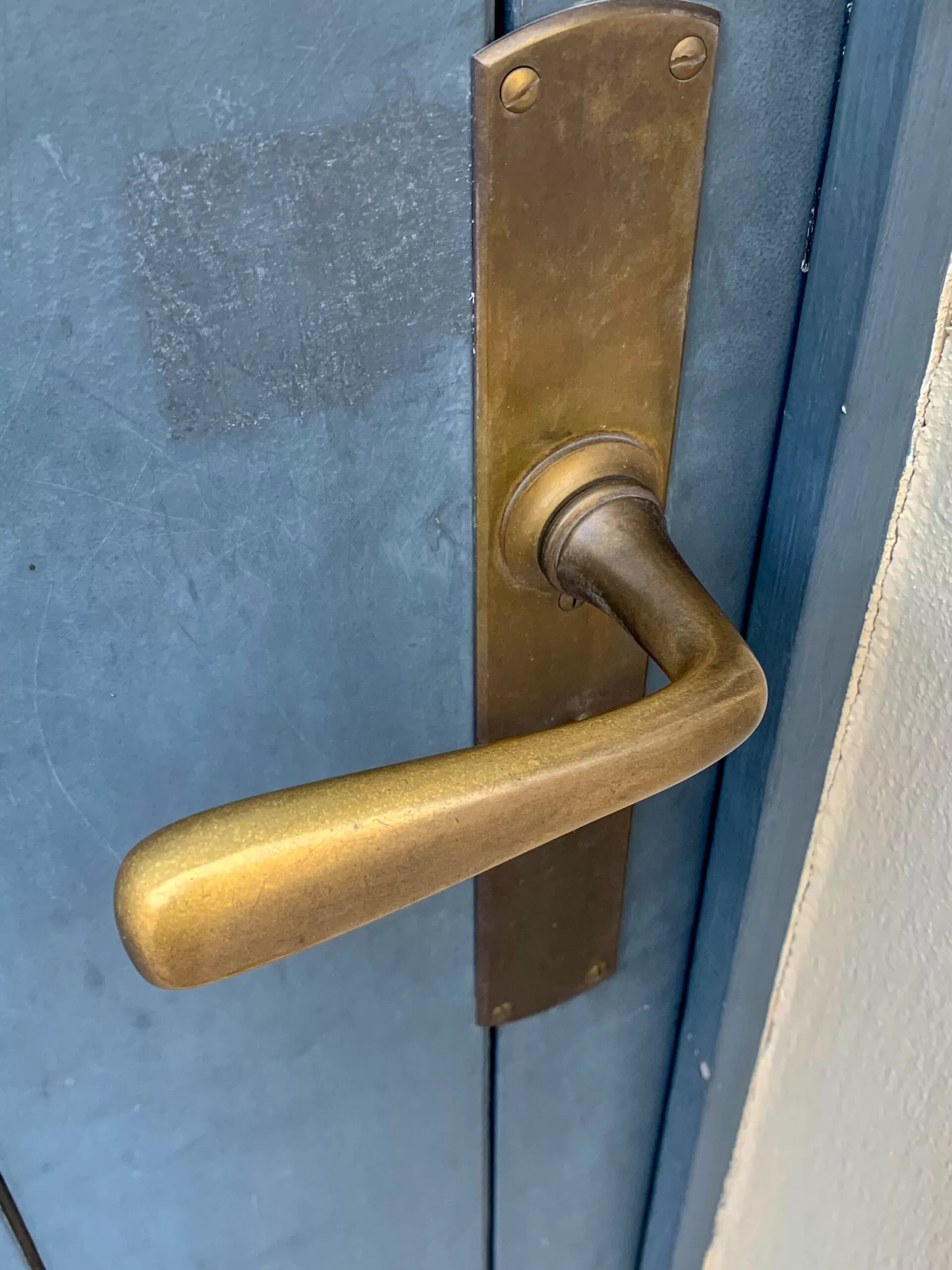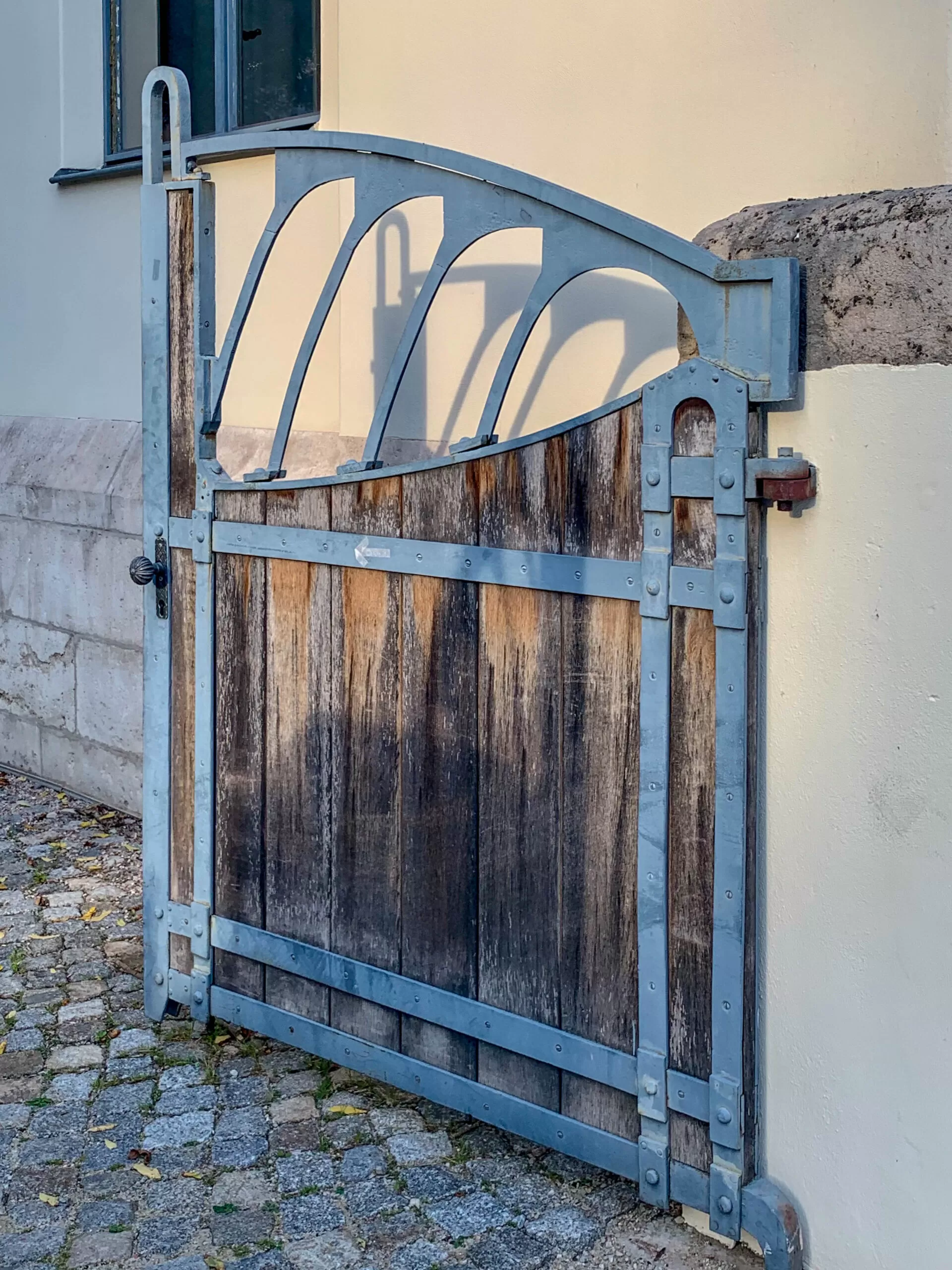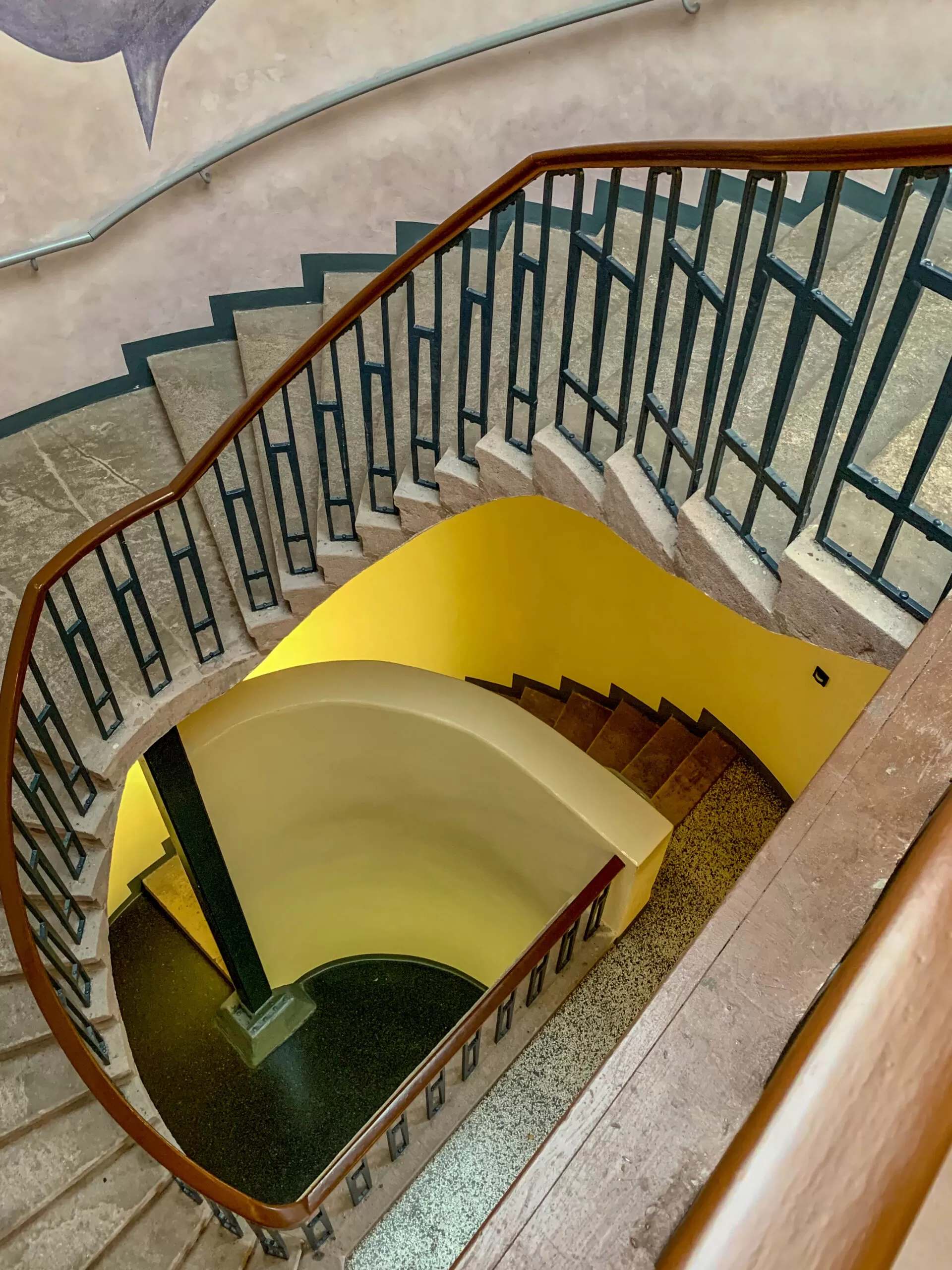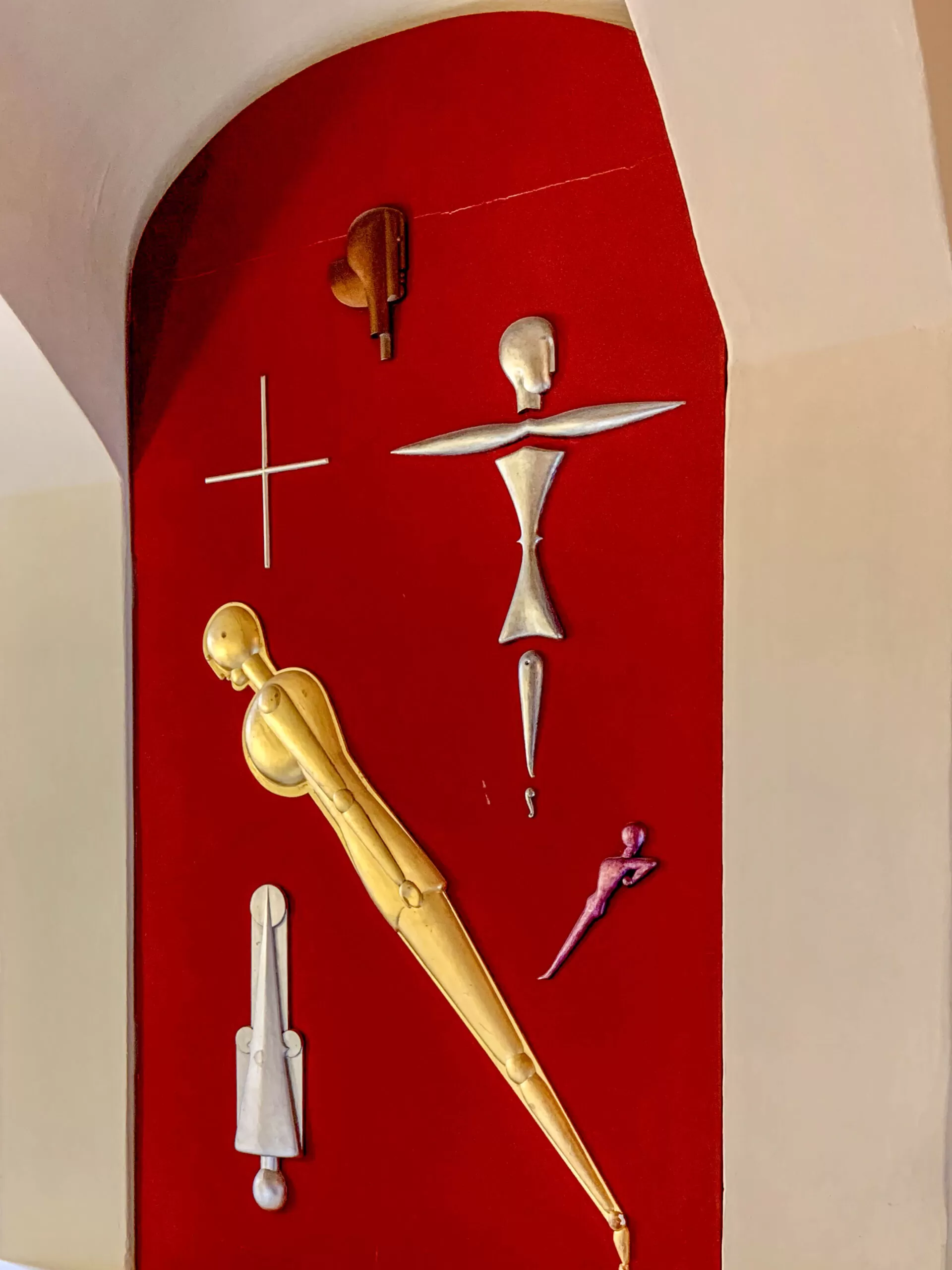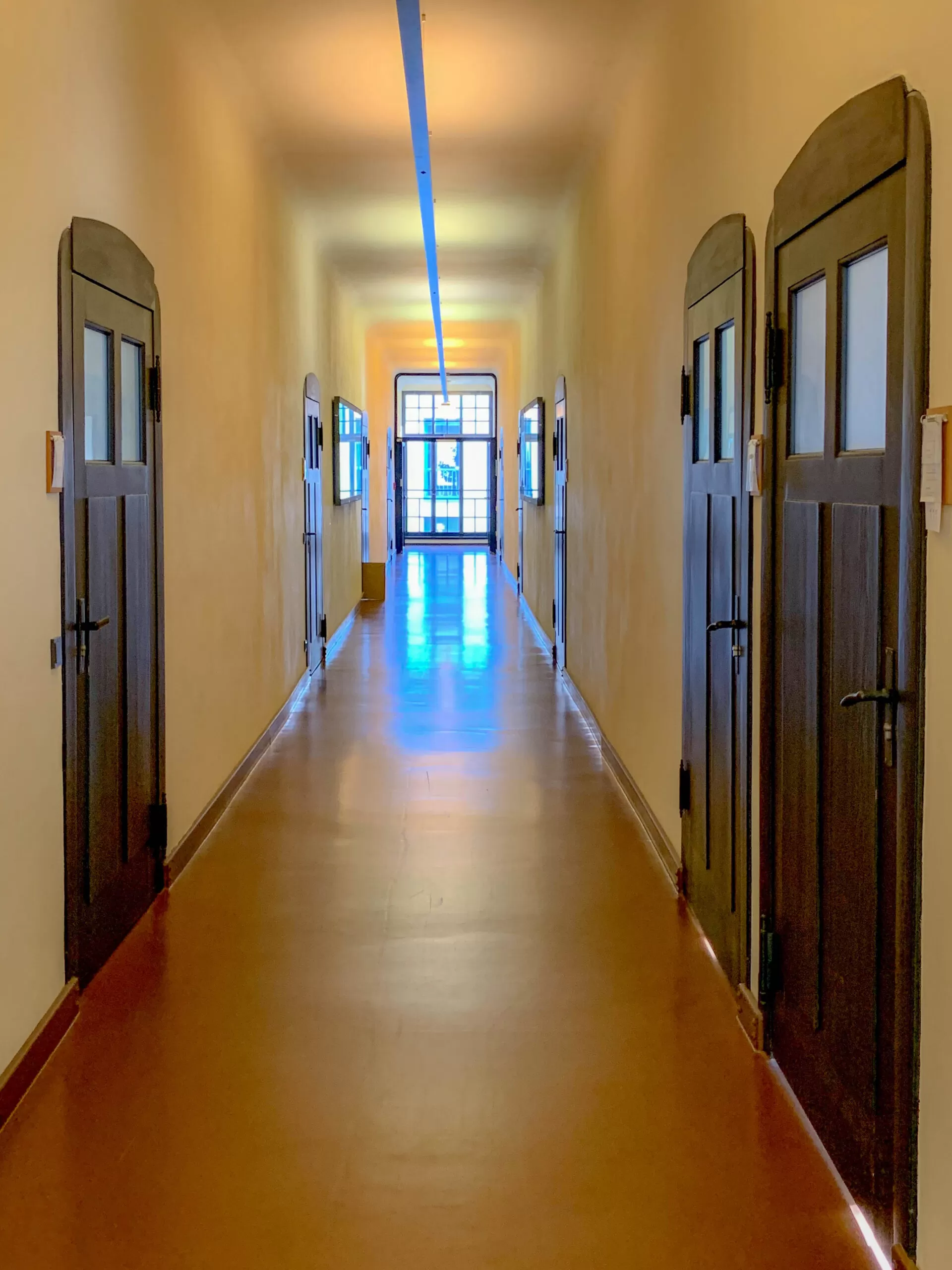1905 – 1906
Architect: Henry van de Velde
Geschwister-Scholl-Straße 7, Weimar, Germany
The listed building was erected between 1905 and 1906 according to plans by Henry van de Velde for the School of Applied Arts in Weimar.
The arts and crafts school building consists of two wings arranged in an angle.
Background
The east wing had already been built in 1905 for the Weimar Sculpture School with the studio of the sculptor Adolf Brütt.
The south wing was added to the existing east wing in 1906 for the School of Applied Arts and Henry van de Velde‘s studio.
Between 1919 and 1925, the Weimar Bauhaus was located here. Today it is the seat of the Design Faculty of the Bauhaus University in Weimar.
Building
The angular building corresponds in the articulation of the wall pillars and the visible steel profiles with the facade of the art school.
The first floor of the south wing, which is enclosed on the facade by a stone horseshoe arch, housed Henry van de Velde’s studio rooms.
Oskar Schlemmer
Inside, there is the central semicircular staircase with murals and wall reliefs by Oskar Schlemmer, created on the occasion of the 1923 Bauhaus exhibition in Weimar.
In 1930 the artworks had been removed, today they are reconstructed.
After the Bauhaus had moved to Dessau, the State College of Crafts and Architecture was opened in the buildings of the School of Art and the School of Applied Arts in April 1926 under the direction of Otto Bartning.
Ernst Neufert, who had come to the Bauhaus in 1919 as one of the first students, took over as head of the building department.
UNESCO World Heritage Site
Today, the so-called Van de Velde Bau is a UNESCO World Heritage Site and thus an architectural and cultural-historical testimony and monument of high rank.
Conversion and overuse of the building had resulted in alterations, room divisions and changes to windows and doors.
Renovation and Restoration
From 2008 to 2010, the building was thoroughly renovated.
According to historical findings and on the basis of intensive research, the architectural offices Pitz & Hoh GmbH, Berlin, and Junk & Reich GmbH, Weimar, restored the Van de Velde building, which had been reshaped by multiple alterations and was partially infested with dry rot and dry rot, to its original condition.
The obstructed western exit to Amalienstrasse was opened and renovated according to Van de Velde’s plans, allowing the original light to be restored to the entrance area.
By removing walls and false ceilings that were installed later, the floor plans and room volumes, including the original door situations, could be restored.
The requirements for the basic renovation included securing the foundation, repair and deconstruction, renovation of the framework and the ceiling beams, structural preparation, barrier-free access to all rooms, and the reorganization of the building into a modern university building for the Design Faculty of the Bauhaus University Weimar.
In February 2010, after their renovation the rooms of the former School of Arts and Crafts were handed over to the Bauhaus University Weimar.
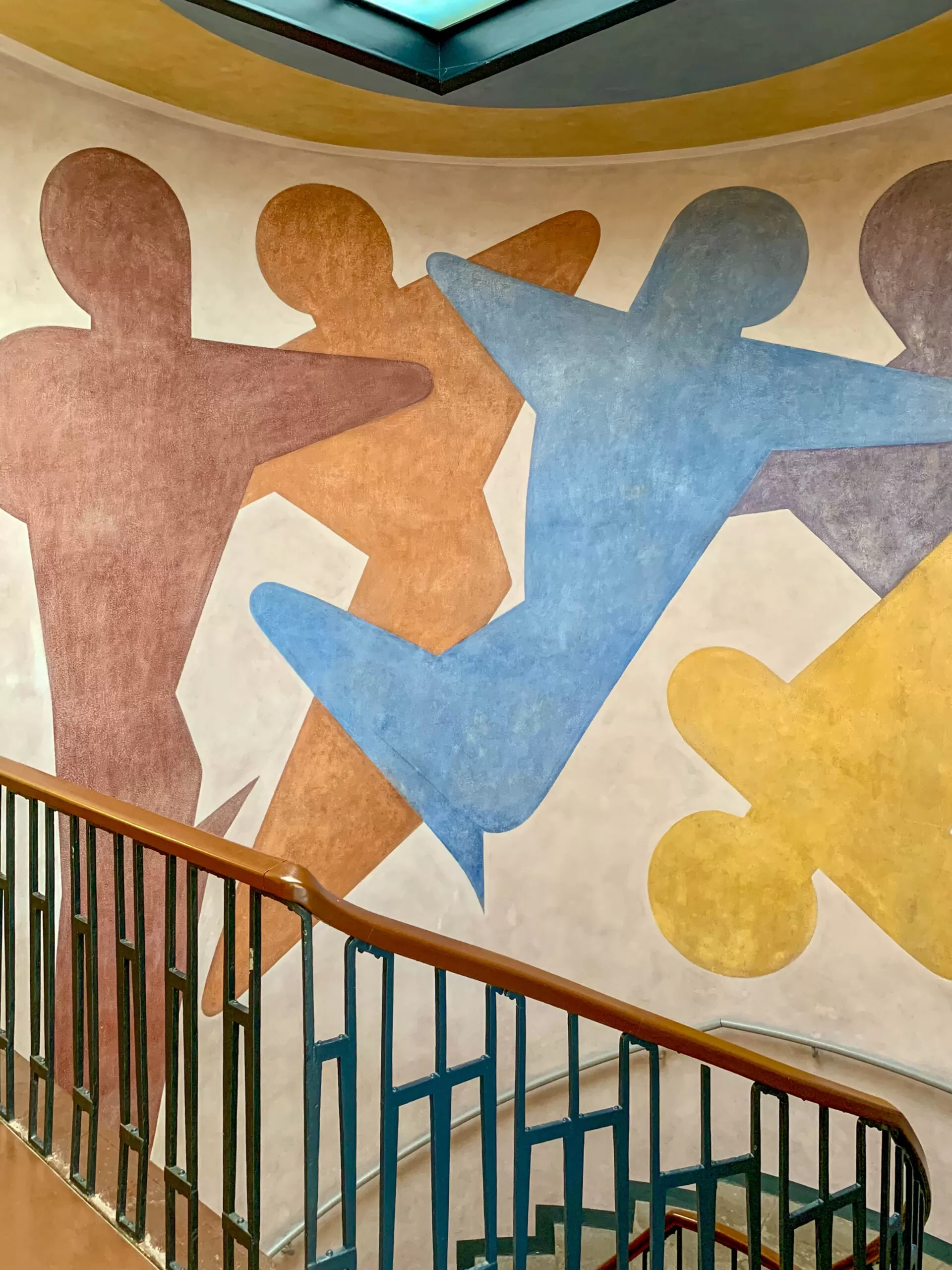
Oskar Schlemmer. Van de Velde Building, 1905-1906. Architect: Henry van de Velde. Photo: Daniela Christmann

